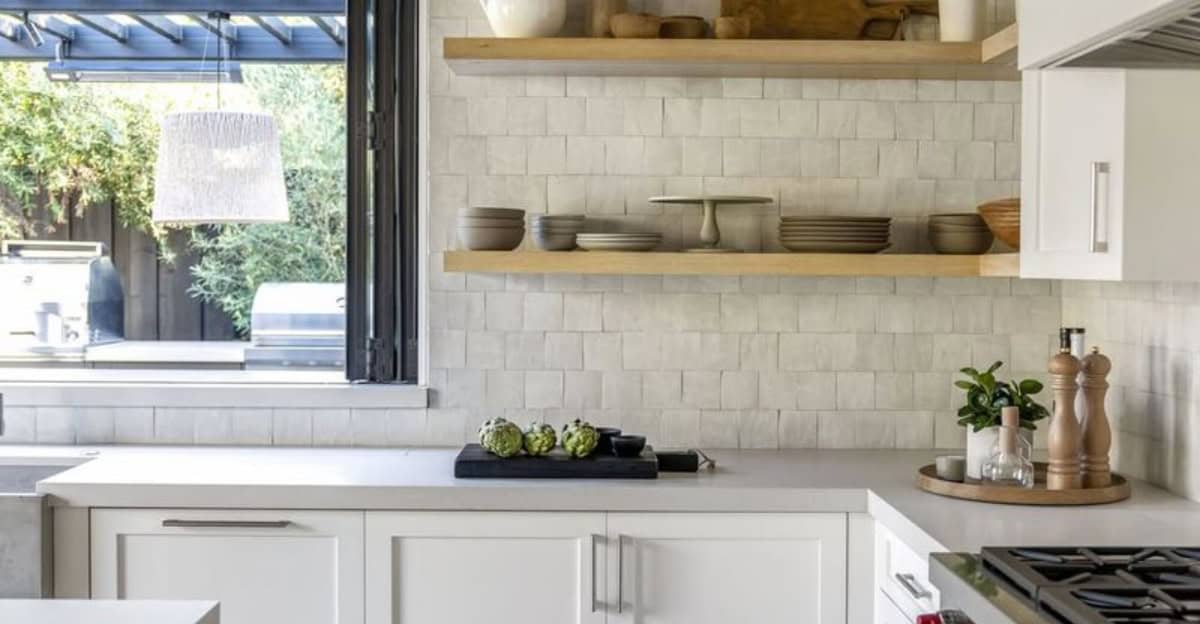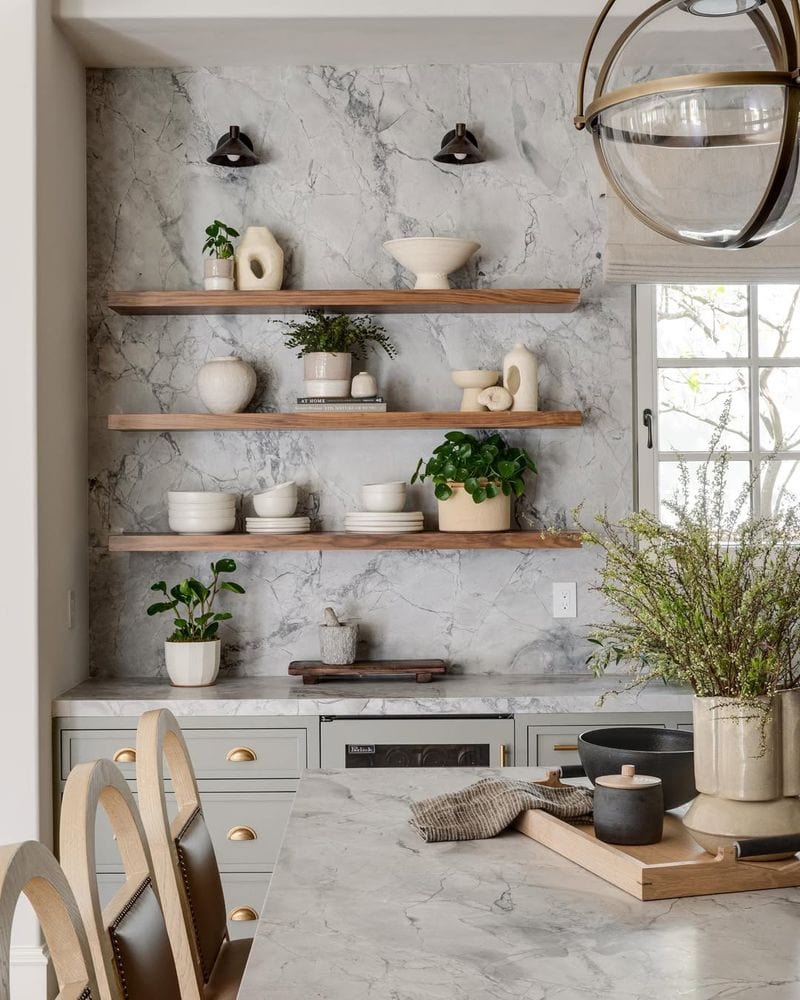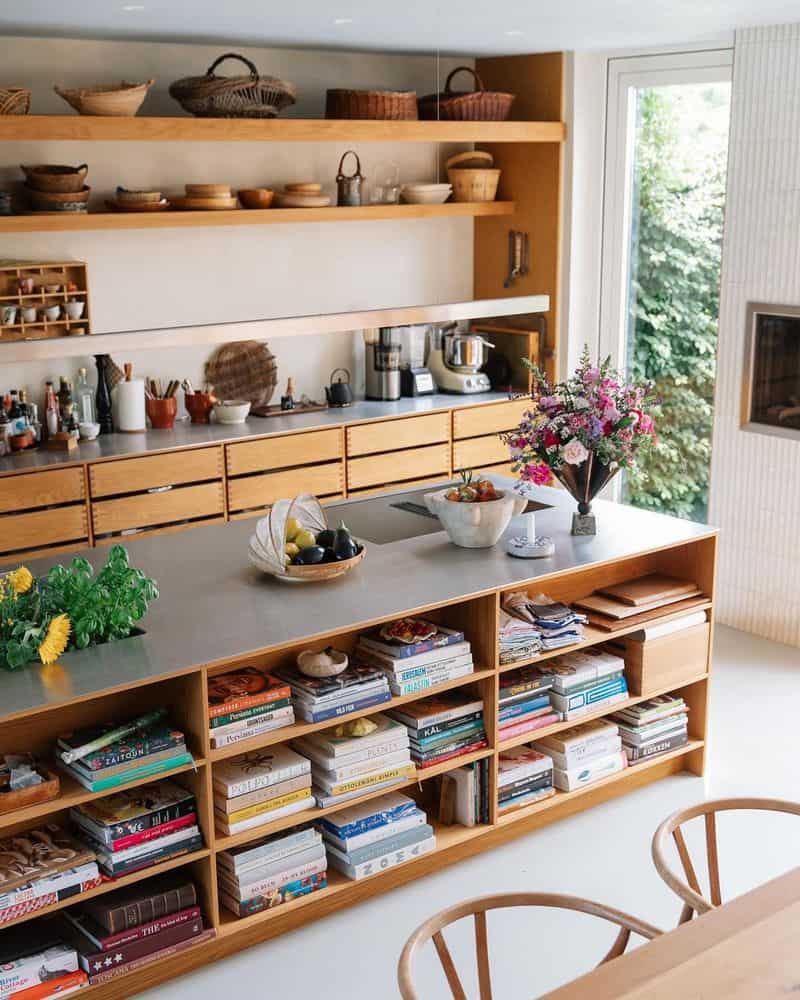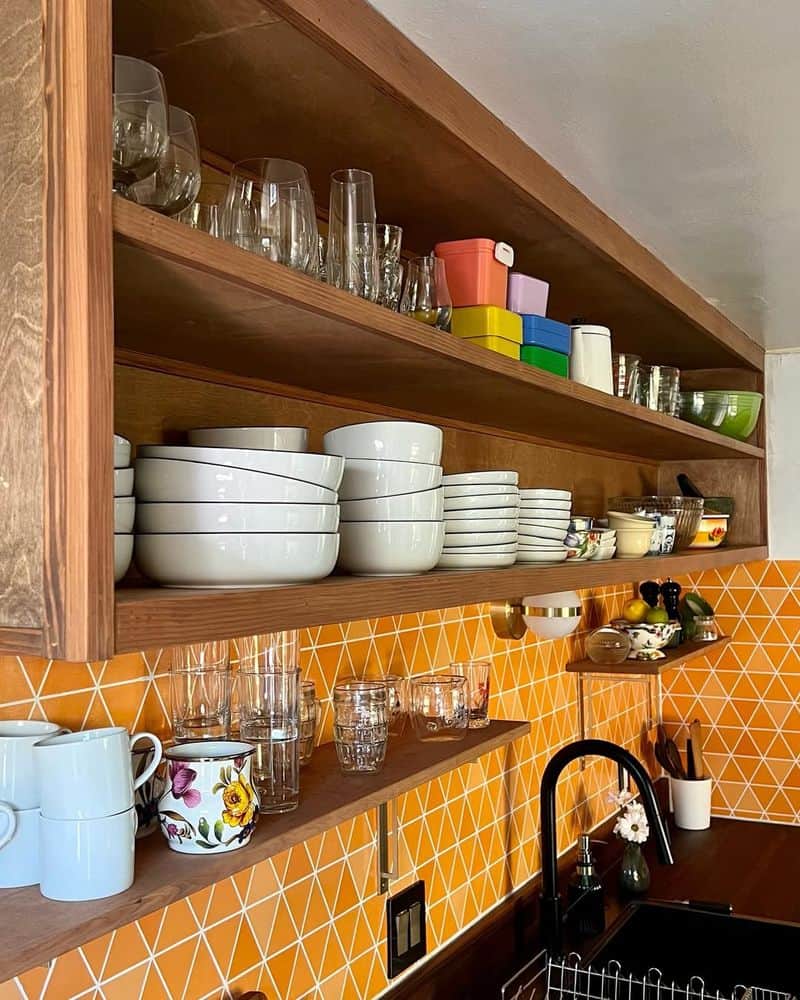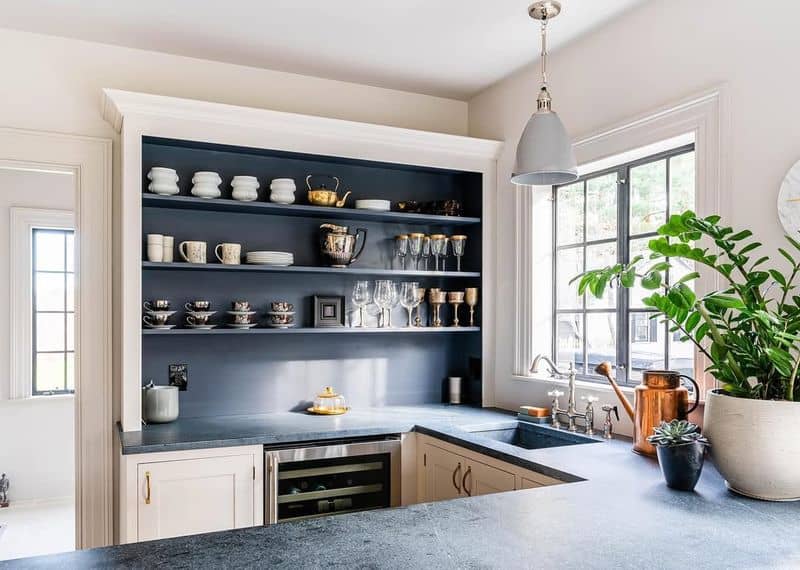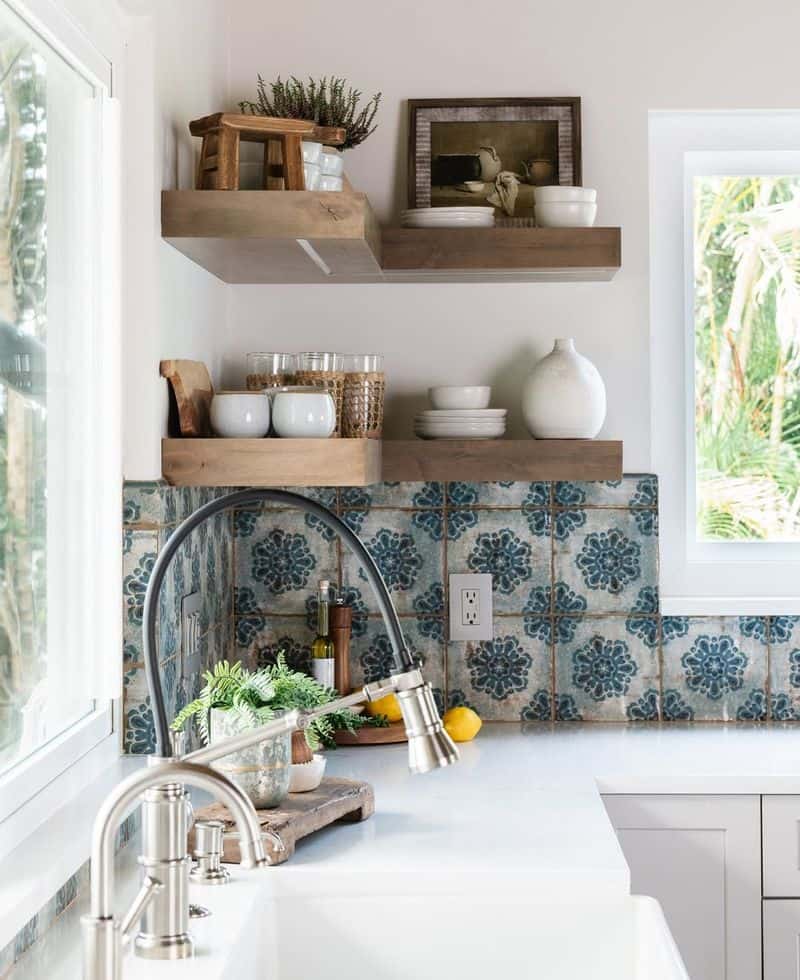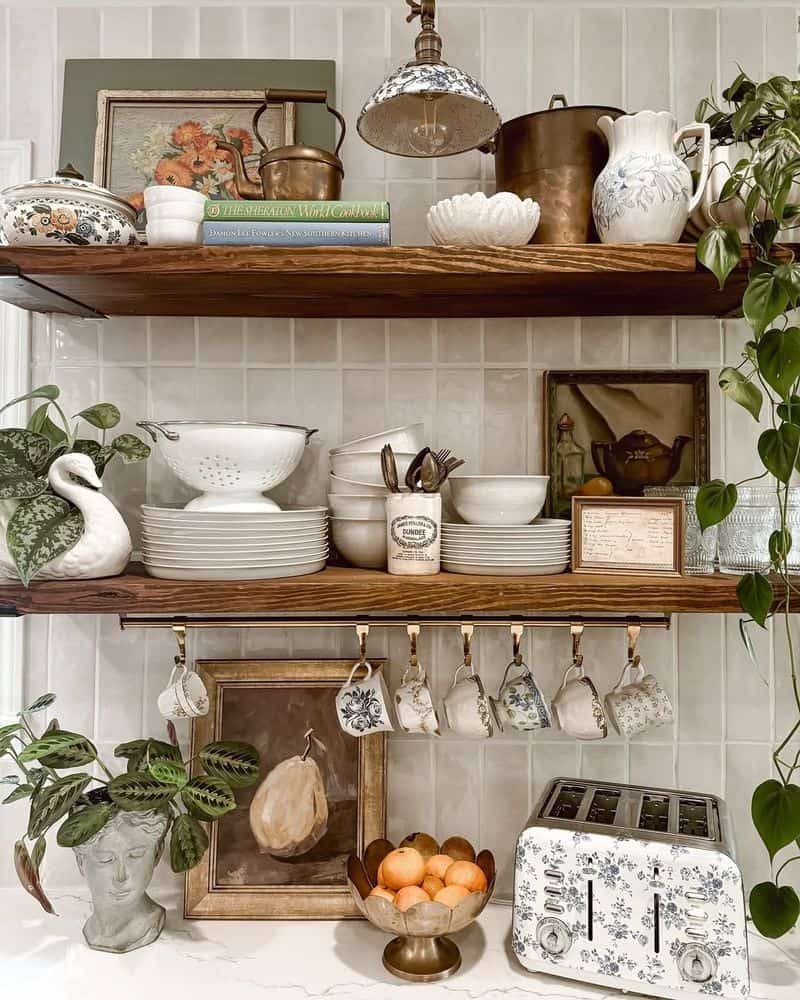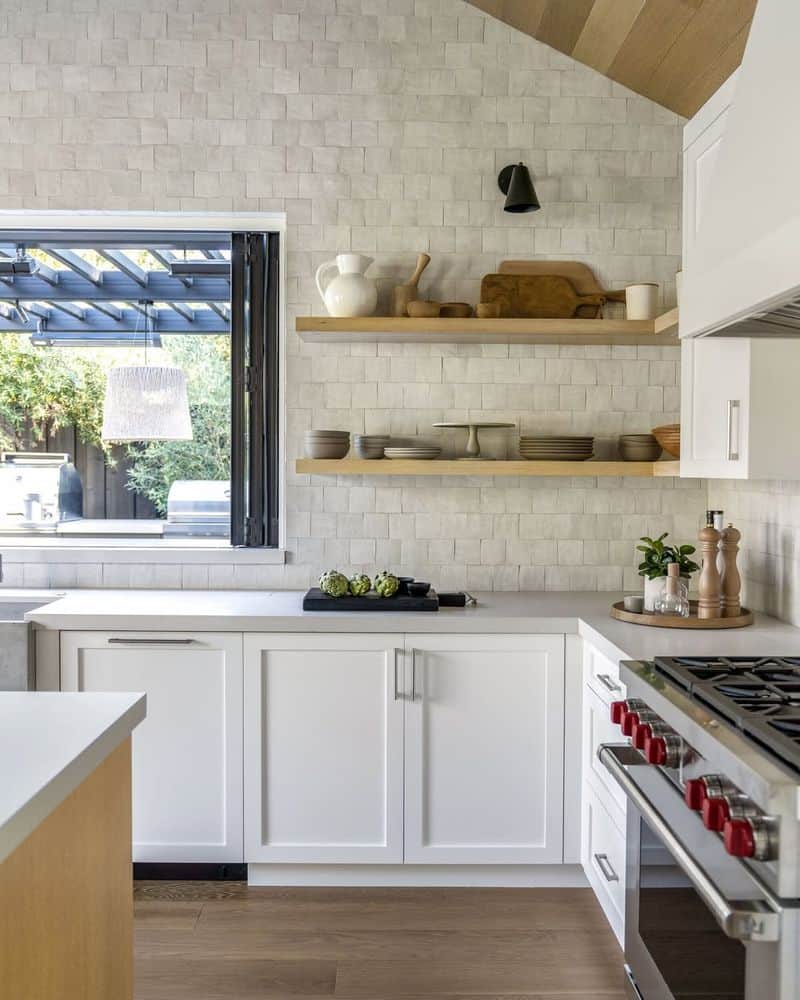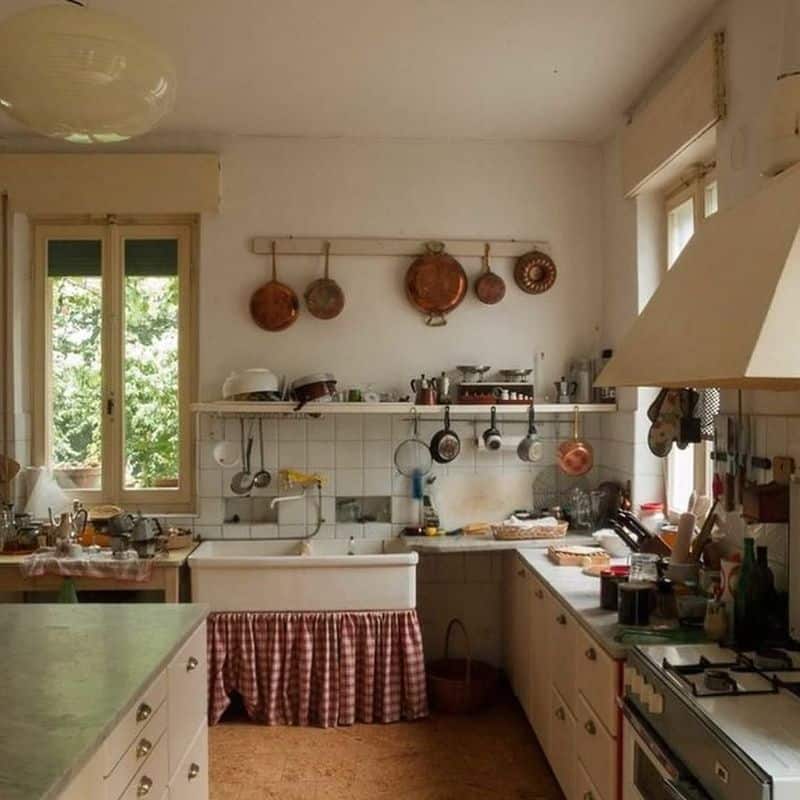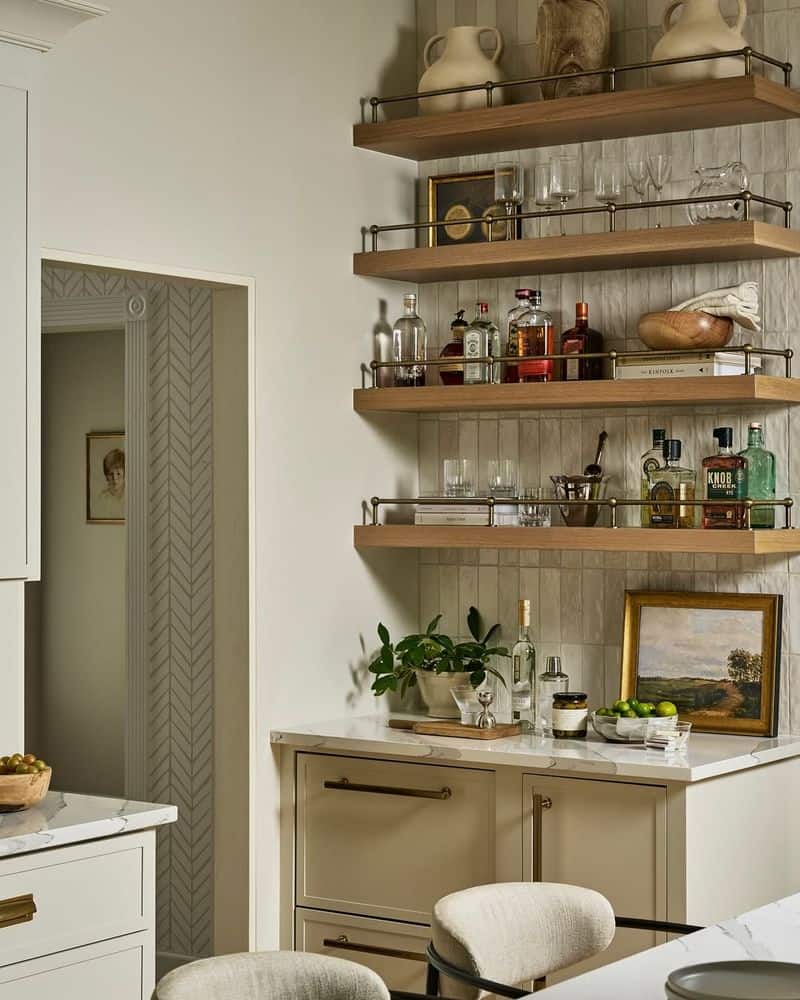Open shelving in kitchens has become a trendy design choice, celebrated for its minimalist aesthetic and open feel. Yet, there are some hidden truths about this design trend that aren’t often shared.
Let’s explore the realities and uncover what they might mean for your kitchen space.
1. Increased Cleaning Effort
Open shelving demands a rigorous cleaning regimen. With every dish exposed, dust becomes a frequent visitor, and maintaining cleanliness requires more effort.
Splashes from cooking can land on your neatly arranged items, creating unforeseen cleaning challenges.
Cleaning shelves regularly becomes a chore, as each plate and bowl needs to be wiped down to keep things looking pristine.
Those who opt for open shelves often find themselves becoming part-time janitors, dedicated to the upkeep of this stylish but high-maintenance design.
Consider if the aesthetic reward outweighs the increased effort required to keep them spotless.
2. Visual Clutter
Open shelving can quickly lead to visual disorder, especially if not carefully curated. Every item is on display, creating a busy visual experience that can be overwhelming.
Without a strategic approach to arrangement, shelves can look chaotic rather than chic. Mixing different styles and colors without consideration can turn a kitchen into a visual cacophony.
Balance is key; choosing complementary colors and styles can create a harmonious look. Yet, this requires thoughtful planning and a keen eye for design to prevent visual overload.
3. Exposure of Dishware
With your dishware exposed to the world, every piece must be display-worthy. Open shelves require careful selection, shining a spotlight on your plates, cups, and bowls.
This transparency means that chipped or mismatched items can no longer be hidden behind cabinet doors.
It’s a call to invest in quality dishware or to curate a collection that can withstand the scrutiny of open display.
Consider this exposure as an opportunity to showcase your best pieces, yet be prepared to maintain a picture-perfect setup daily.
4. Potential for Grease Buildup
Cooking often results in grease and grime, which love to settle on exposed surfaces. Open shelving near cooking areas can become a grease magnet, complicating maintenance.
Regular cleaning becomes essential to avoid a buildup that could affect the appearance and hygiene of your kitchen. Items stored on these shelves demand frequent washing to remain guest-ready.
Strategically placing less-used or decorative items on these shelves can reduce the cleaning workload, but expect some extra elbow grease to keep things sparkling.
5. Limited Storage for Certain Items
Open shelving offers limited space, restricting the storage of bulky or unsightly items. It’s not the place for your blender or collection of mismatched Tupperware.
This limitation means prioritizing aesthetics over storage capacity, a trade-off that can frustrate those needing practical storage solutions.
Finding alternative storage for less appealing kitchen tools becomes necessary.
Open shelves are ideal for showcasing select items, but their limited capacity requires careful consideration of what deserves a place in the spotlight.
6. Design Consistency Challenges
Achieving design consistency with open shelving can be tricky. Mismatched shelves or variances in style can disrupt a unified kitchen look.
Consistency is crucial, and this design choice demands commitment to a cohesive theme. The challenge lies in maintaining this harmony amidst evolving tastes and changing kitchen needs.
Choosing materials and colors that align with your overall kitchen design can create a seamless look, but it requires careful planning and a sustained effort to maintain visual unity.
7. Potential for a Cluttered Appearance
Open shelves can look cluttered if not managed with a minimalist approach. Every extra item adds to the visual noise, detracting from a clean aesthetic.
Overloading shelves can transform them from chic displays into clutter collectors. The key is to embrace moderation, selectively displaying items that add beauty and function.
Regular editing and organization are necessary to maintain the intended minimalism and prevent the shelves from becoming a visual jumble.
8. Space Perception
Open shelves can alter the perception of space, making a small kitchen feel larger by eliminating bulky cabinets. This can enhance airflow and light distribution.
However, this optical illusion doesn’t increase actual storage capacity. The challenge is maximizing perceived space while acknowledging real limitations.
Choosing open shelving for its space-enhancing properties requires balancing aesthetics with practicality, ensuring that the space feels open without sacrificing functionality.
9. Compatibility with Cooking Habits
Open shelving may not align with every cooking style. Quick access to items is a benefit, yet this design may not suit those who prefer a tidy, enclosed setup.
For enthusiastic cooks, the ease of reaching frequently used items is a plus. But for those who cherish order, the exposure can feel disruptive.
Understanding your cooking habits and preferences is vital before opting for open shelves, ensuring they complement rather than complicate your kitchen routine.
10. Maintenance Over Time
Over time, open shelves demand ongoing maintenance to retain their appeal. Exposure to kitchen elements means they can age quicker than enclosed cabinets.
Regular dusting, cleaning, and occasional refinishing may be necessary to keep them looking fresh. This commitment may deter those seeking a low-maintenance kitchen solution.
Understanding the long-term upkeep required helps in deciding if open shelving fits your lifestyle, ensuring your kitchen remains both functional and fashionable.

